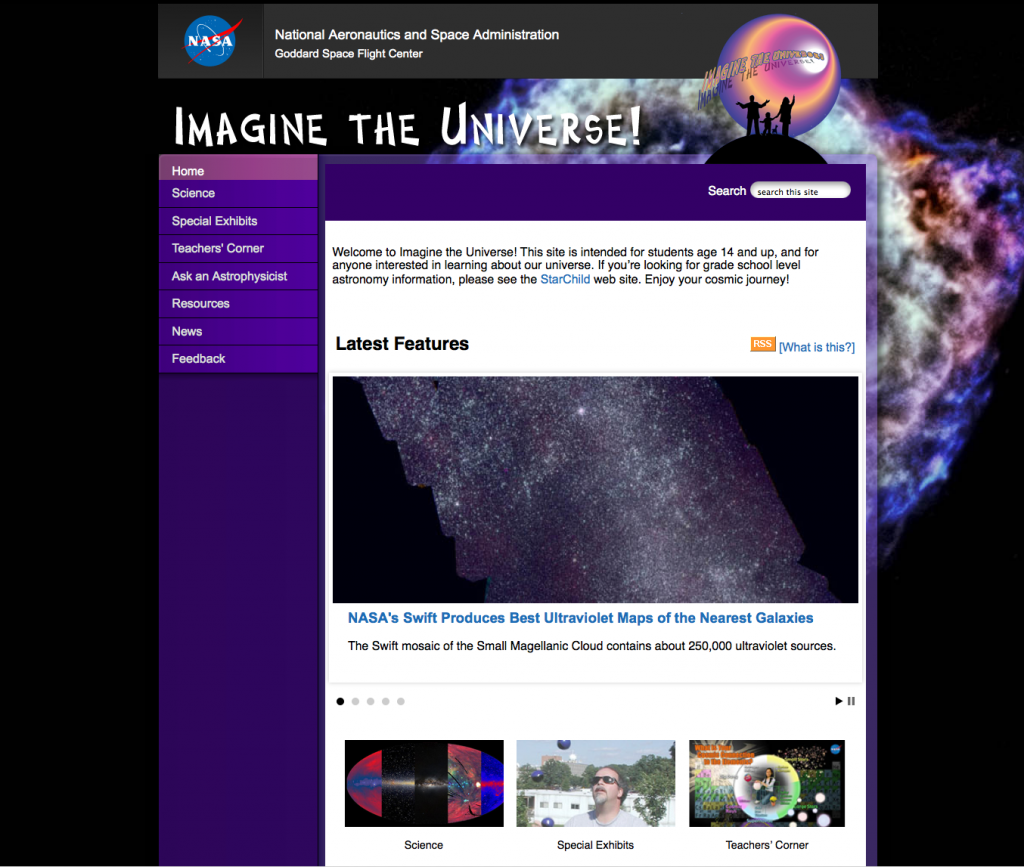Imagine the Universe
- By Maggie Masetti
- December 1, 2014
- Comments Off on Imagine the Universe
So the big news – that I’ll go ahead and put up front – is that the Imagine the Universe! site just got a big update! Go check it out! It’s ok, I’ll wait right here while you do. It’ll even open in a different tab/window!
In a nutshell, Imagine the Universe! is a resource dedicated to some of the most extreme objects that are out there. In its own words, you can explore “black holes, dark matter, and quasars… A universe full of extremely high energies, high densities, high pressures, and extremely intense magnetic fields which allow us to test our understanding of the laws of physics.” What’s cooler than that? (Don’t answer that.) There is also an entire Teacher’s Corner full of lesson plans and activities – we’ve actually been developing content for Imagine since the late 90s.
I’ve been at NASA Goddard just a hair longer than Imagine has been around. Or maybe we date back to around the same time. Imagine is somewhat intertwined with my Goddard experience, so talking about all the things Imagine has done over the years is a bit of a personal story for me.
I started at NASA Goddard during the summer of 1996 (I am OLD) as a college student. I worked with Dr. Jim Lochner on the Rossi X-ray Timing Explorer Learning Center back when websites came with default gray backgrounds. It was my first experience with education and public outreach, something I didn’t know existed, but that I immediately loved. What could be more important and fulfilling than showing the public what we do at NASA and doing things like helping teachers use NASA science (like real data fresh from the satellite) in the classroom?
Imagine the Universe! first came into being as the High Energy Astrophysics Learning Center. It was while I was away finishing my last year at school that it was finally given the name Imagine the Universe!. I graduated with astronomy and physics degrees and was offered a job working with Jim on RXTE. Coming back to Goddard was very much like coming home. (Note that I have yet to leave!)
I spent the next few years working with teachers, developing the RXTE Learning Center, and working on lesson plans for Imagine with one of my officemates. (I’m still super proud of this one on X-ray spectroscopy and supernova remnants that Allie Hajian and I did.) Imagine did posters every year on topics like black holes, and the life cycles of stars, complete with lesson plan books.
Here are the posters we did on black holes for Imagine and Starchild (a sister site to Imagine for K-4). I contributed some graphics to them!


One of the other big things we did every year, was put out a CD (one day it would be a DVD) of the whole Imagine site for teachers without classroom internet access. What you see below represents 16 years of Imagine CDs/DVDs. And now we are retired from doing them, for a variety of reasons.
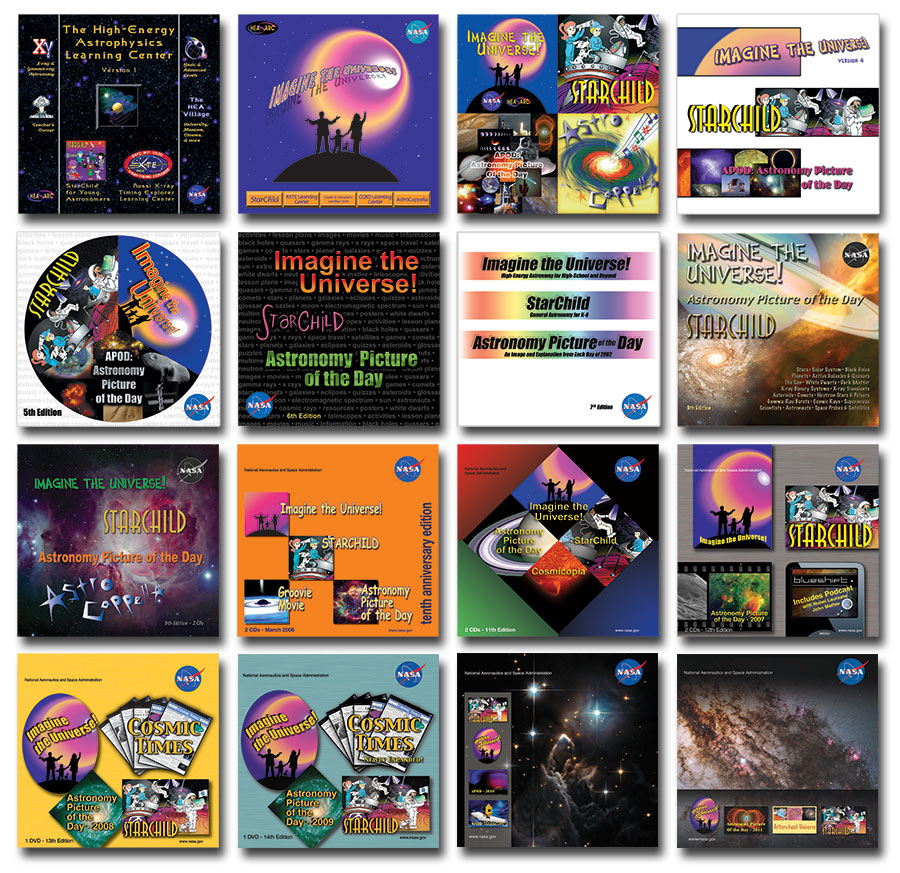
Imagine also has an Ask an Astrophysicist service which has changed names over the years; it has variously been Ask an Astronomer, an Astrophysicist, a High-energy Astrophysicist, etc. But it is still there, and with a large archive of previously asked questions that I often refer to myself. I spent a few years answering questions with Blueshifter Koji Mukai (a pair of people would take a week’s worth of questions).
Our Imagine team changed a bit each year though we often had little blurbs some of which followed us for a long time. For a while, I was: “Maggie ‘Jedi knight’ Masetti – Maggie is the creative force behind the RXTE and Astro-E Learning Centers, among other things. She has answers at hand for many an ask astro question, not to mention a Simpsons or Star Wars quote for every occasion.” Actually, I think this is still mostly how I am listed on the Imagine team page.
Here’s the very first Imagine team pic in 1997. I think Koji still has that vest. Also this is a gif. And it’s really tiny and pixally. TECHNOLOGY!
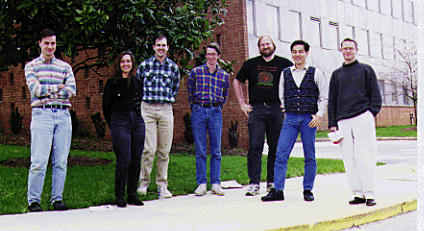
Below is my first appearance with the Imagine team in 1998. I’m on the left. It was the 90s and we wore our clothes really baggy.
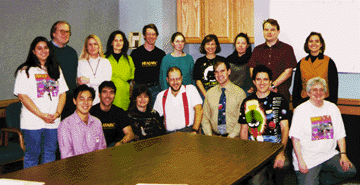
Here we are in 2000. I still have that sweater.
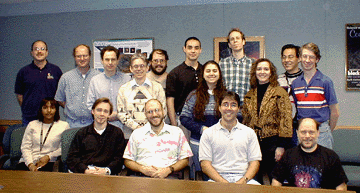
And 2001. I’m holding the RXTE paper model I designed, which you can still download and build. Also I think Koji might also still have that sweater.
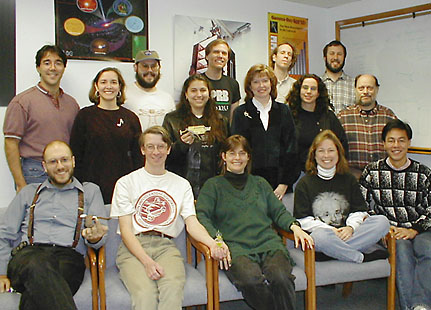
It wasn’t long after this that we lost the Astro-E satellite (you might have noticed from my Imagine blurb that I did the initial learning center for this mission) and I moved over to Earth Science for a few years.
Sara makes her first appearance in the 2004 team photo. Koji does not still have that mustache.
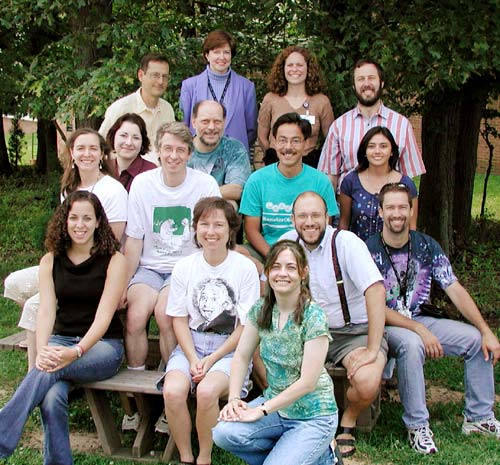
Here is the team in 2006 – and oddly, the last time a group photo was taken. You can see Sara there, but since then the team has changed quite a bit. Like Koji’s facial hair.
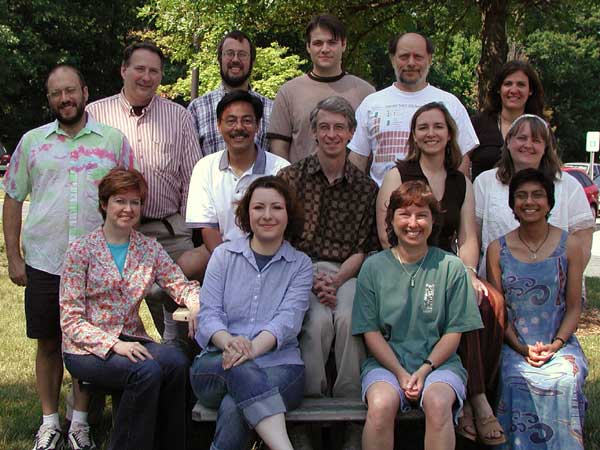
I started on the James Webb Space Telescope project in late 2005, and I have remained back in the astrophysics fold since then. Blueshift started “bringing the universe closer to you” in 2007 when podcasts were relatively newfangled and blogging was mostly a thing you did on Livejournal.
It’s both amazing and awesome to me that the things that were nascent back in the internet dark ages of 1997 are still valuable science education resources today. A lot of time and care went into developing them – and into keeping them updated as technology (and the once default gray webpage background) has changed.
So for all your high-energy astrophysics needs, we remain your friendly neighborhood education and outreach team.
For your convenience, here are some of the sites I talked about, as well as some of our other learning center resources:
- Imagine the Universe (ages 14 and up)
- Imagine: Teacher’s Corner (lesson plans, grade 6 and up)
- Imagine: Ask an Astrophysicist
- Starchild (like Imagine but for K-4)
- The Rossi X-ray Timing Explorer Learning Center (lesson plans and activities for grades 9-12)
- Cosmicopia (cosmic rays!)
- Collaboration Across Cultures (formerly the Astro-E Learning Center, now incorporates Astro-H and other joint Japanese/US X-ray astronomy flight projects)


